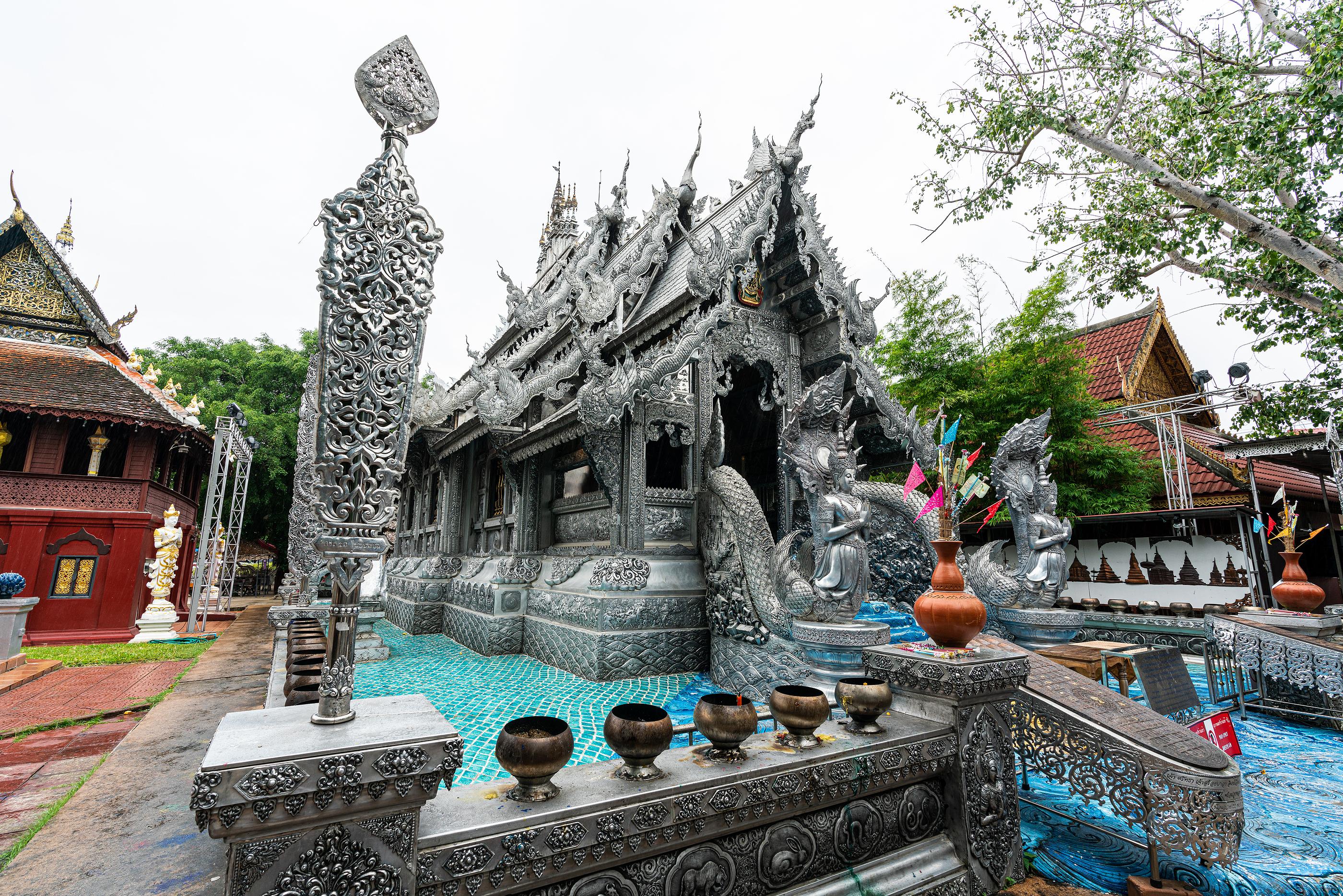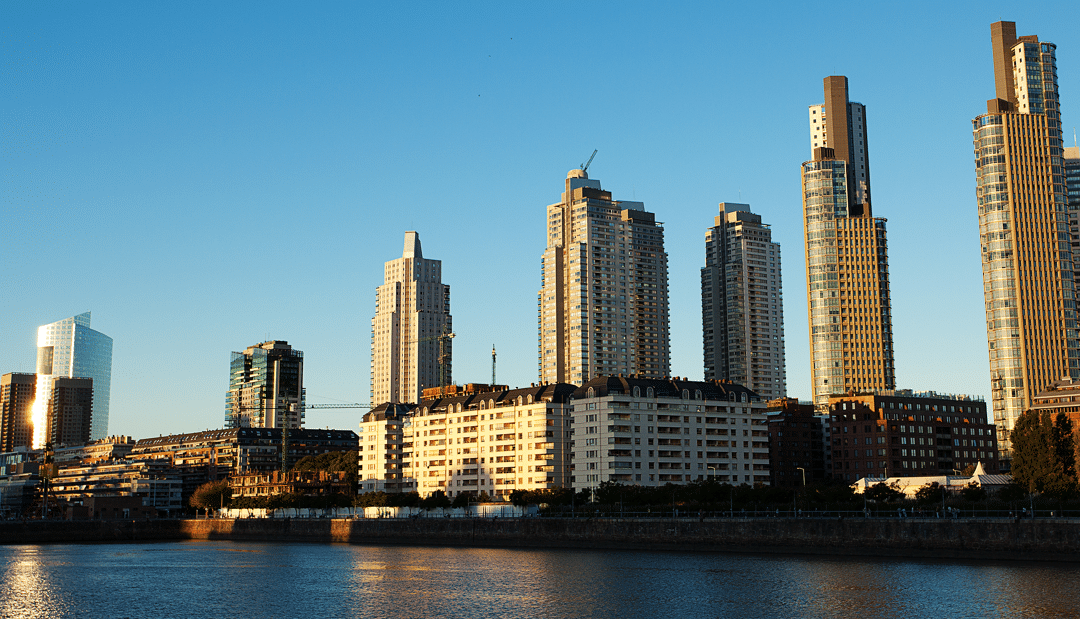

How to be a Digital Nomad in Berlin, Germany
Berlin is neither dull nor benign. Today Berlin is bereft of vanity. Instead, it’s a story of a city constructed atop of wars.
![]() 10 people find this post amazing!
10 people find this post amazing!
Asia always wins the hearts of travelers with its unique identity and the beauty of the traditional life flow. Which the Western World has forgotten behind the curtains of the modern century. Digital Nomad in Chiang Mai, Thailand, usually people say you travel west if you are looking for materialism. If you are looking for spirituality, your way lies to the east. Thailand is one of these unique places where spirituality is found, where the mind leaves the stage.
Let’s imagine that Bangkok is the capital of The Kingdom of Thailand. Then, Thailand is one of these unique places where spirituality is found, where the mind leaves the stage. Chiang Mai is the country’s soul or, maybe, of all of Southeastern Asia. It is situated in northern Thailand, 700 kilometers away from Bangkok, and surrounded by a mountainous area just 310 meters above sea level. Chiang Mai is the second-largest city in the country; it’s also the capital of the eponymous province.

Chiang Mai, Thailand, has become a hub for digital nomads in recent years. With its affordable cost of living, vibrant culture, and a reliable internet connection, it’s no surprise that more and more people are choosing to work remotely from this charming city in Northern Thailand.
To be a successful digital nomad in Chiang Mai, finding a comfortable and productive workspace is essential. Plenty of coworking spaces and cafes throughout the city cater to remote workers, offering high-speed internet, comfortable seating, and a quiet atmosphere. Many of these spaces also host networking events and workshops, providing opportunities to connect with other professionals and learn new skills.
Digital nomads in Chiang Mai should also take advantage of the city’s many cultural attractions and outdoor activities. From exploring ancient temples to hiking in the nearby mountains, there’s no shortage of things to see and do in this vibrant city. By balancing work and play, digital nomads can enjoy all that Chiang Mai offers while still staying productive and focused on their work.

Over the last few decades, Chiang Mai has turned from a quiet religious town with hundreds of Wats (Buddhist temples) into a vibing, sometimes overcrowded city full of tourists worldwide. The richness of culture and the neighboring nature of the city attract millions of tourists each year. The loyal system of immigration makes it easy for almost any desire to stay in the country for a crazy long period, just on temporary visas.
Chiang Mai has developed an excellent infrastructure and amenities for the needs of those who travel here and decide to stay, especially as a working online expat. The city is full of digital nomads, and as known, the demand creates the supply, so many cafes, coworking spaces, hotels, and hostels are opened to please the city’s guests.
Chiang Mai has a sound healthcare system, with many hospitals and clinics offering high-quality medical care. Some of the best hospitals in Chiang Mai include:
These hospitals have English-speaking staff and are equipped with modern facilities. They offer various services, including emergency care, general medicine, and specialist treatments. If you need to see a doctor or receive medical treatment, it’s crucial to have adequate health insurance. Many digital nomads in Chiang Mai opt for international health insurance plans, which offer comprehensive coverage and access to a global network of healthcare providers.
| ?️ Continent | Asia | ?️? Country | Thailand |
| ✈️ Average trip length | ?18 days | ?️ Internet speed (avg) | ?210 Mbps |
| ☀️ Weather (now) | ☂️ 30°C + average | ? Air quality (now) | acceptable |
| ? Power | 230V 50Hz | ? Best taxi app* | Grab |
The weather in Chiang Mai is just right. Those cooler temperatures are thanks to Chiang Mai’s higher elevation close to Thailand’s tallest mountains. The best time to visit Chiang Mai coincides with the lowest overall temperatures and humidity, which occur between November and February. This is also the peak tourist season when festivals like Loi Krathong and the Chiang Mai Flower Festival draw tourists from all over the region, attracted by Chiang Mai’s seasonally crisp air and festive atmosphere.
The area is less fun to visit during the hot, dry season between March and June and during its “smoky season” in March caused by local farmers burning off chaff left over from the last harvest. Things brighten up a bit when the rainy season begins in July; greener surroundings and gushier (if muddier) waterfalls make up for the higher humidity and the increased chances of washed-out roads. The long and short of it is: cooler weather also means more tourists, but don’t rule out a rainy-season visit to this gorgeous northern Thai city.
The dry, hot months starting from late February coincide with the “burning season” in Chiang Mai, when farmers in Northern Thailand burn any leftover chaff from their harvest, creating a noxious haze that’s bottled in by the nearby mountains. The crisp, cool air that Chiang Mai enjoys from November to February allows tourists to walk around the night markets and hike in the mountains without breaking a sweat.
Chiang Mai, the largest, most culturally significant, and most exciting city in northern Thailand, is the capital of Chiang Mai Province. The city is home to Chiang Mai City Arts and Culture center museum, and there are nine critical Buddhist temples worth a visit.
Chiang Mai has a population of about 150,000 inhabitants; in Chiang Mai Metropolitan Area lives, almost 1 million people. The official language is Thai, but English is widely spoken.
| ? WeChat +131% | ?? Speaks Mandarin +131% | ? Surfing +30% | ? Not COVID vaccinated +208% |
| ? LINE +125% | ?? Speaks Korean +126% | ✋? Asian +30% | ? Startup Founder +56% |
| ? Roost Stand +69% | ?? Speaks German +95% | ? Vanlife +29% | ? Web Dev +39% |
| ? Samoyeds +64% | ? Not close to my parents +88% | ? Blogging +28% | ? Race sports |
The cost of living is vital information if you are looking to move to or live for a more extended period in another country. Overall prices will vary according to the individual, their circumstances, and their lifestyle, but the necessities, such as accommodation, utilities, transportation, food, and entertainment, will be very similar. This blog post will determine approximately how much a person needs to earn or spend to live comfortably in Chiang Mai.
This is often uppermost in most people’s minds when they are considering whether to come and live in Thailand. It is relatively inexpensive to live in Thailand, and Chiang Mai in particular (which is cheaper than Bangkok by about a third). However, there are always hidden costs. So don’t be duped by the entertaining YouTube videos or blog articles that claim you can live here for under ฿10,000 / month (USD$320 / AUD$420).
The short answer to the Cost of Living in Chiang Mai is: “it depends.” It will depend on several things, including where you would like to live in Chiang Mai, the accommodation style, and how you want to live. The more you live a Western lifestyle (wine, coffee, desserts, pizza, steak, partying and clubbing, staying in fancy resorts, etc.), the higher your living costs will be.
Transportation Costs in Chiang Mai: If you plan to stay long term, you will also want to get around independently, without always having to rely on rentals, Grab taxis, or songtaews (taxi vans). The best way to do this is to get a Thai driving license and buy a scooter if you’re young and active. If you’re older and/or prefer to travel more comfortably (and safely), then buy a car.
| ? Cost of living for nomad | $954 / month | ? Cost of living for expat | <$678 / month |
| ? Cost of living for family | $1,569 / month | ? Cost of living for local | $448 / month |
| ? 1br studio rent in center | $288 / month | ? Coworking | $101 / month |
| ? Hotel (median price) | $414 / month | ? Hotel (median price) | $19 / night |
| ? Airbnb (median from 1,001 listings) | $1,035 / month | ? Airbnb (median price) | $34 / night |
Chiang Mai is the Digital Nomad Centre of the Universe. More specifically, the Nimman area of Chiang Mai is the beating heart of this digital nomad headquarters.
Hundreds (if not thousands) of digital nomads descend upon Chiang Mai every year, often staying for months at a time. Many even come for a month or two and fall in love with the culture/amenities/social scene/cost of living so much that they stay for much longer. Like Bali, it’s one of those places that sucks you in and doesn’t always spit you back out.
The Thai people are brilliant and incredibly entrepreneurial; instead of resisting the onslaught of visitors holding wads of Euros/Dollars and craving some modern comforts at affordable prices, they welcome them. As such, an entire industry of serviced apartments exists. These furnished apartments are available for monthly rentals, often with lower rates if you commit for six months or a year.
Although I had to lean into a lot of discomfort, I resisted the urge to book an apartment (through Airbnb) for the duration of my stay before arrival. Given what I knew of the cost of living in Chiang Mai, the online prices made no sense. I knew I could do better. So I just booked my first three nights, specifically at The Dome, conveniently located within walking distance of the old city and the heart of the Nimman district.
Although most of the apartments I looked at had staffed reception areas, apparently, some just have noticeboards with phone numbers to call. Either way, you’ll need a phone number for the reservation and leasing process. SIM cards are cheap and cheerful in Thailand, with great data plans. I bought my SIM card at Bangkok airport while waiting for my luggage to arrive at the carousel.
The best place to find out where you want to live is to walk around. You can cover more ground on a bicycle or a scooter. (Me? I’m not inclined to rent scooters in foreign countries after suffering a near-fatal accident on one in the Caribbean, especially not in big cities on arrival. But if you’re more comfortable with the idea, knock yourself out – figuratively speaking, that is).
A few neighborhoods have groupings of condos that typically have an allotment of apartments for short/medium-term rentals. One of these neighborhoods is just north of the Maya Lifestyle Shopping Centre. Green Hill is a popular complex, as are PromT and Moda. Further south is some other places, such as Hillside (near a co-working space I enjoyed frequenting called Mana).
Many of these buildings are condominiums with staffed reception areas. This makes it dead easy; simply walk in and ask if they have any vacancies. The pricing is usually standardized, and the process is simple. If there is a vacancy that suits your needs, ask to see the apartment (this should go without saying). Other buildings may not have a reception area but a notice board at the front where unit owners can post their vacancies with a phone number to call.
Before committing, ensure you know what you’re getting into. Most apartments require one to two months’ rent as a security deposit, which will be refunded when you leave (assuming you haven’t trashed the place). Rent varies and is generally on the rise yearly as Chiang Mai (and, more specifically, the Nimman area) increases in popularity. The general rate for a one-bedroom furnished apartment in 2017 was 10,000-15,000 Thai baht (about $300-450).
To reserve your apartment for the move-in date (if you’re not moving in on the same day), you will have to immediately put cash on the line. (For my apartment, it was 5,000 Thai Baht – about $150). On move-in day, the 5,000 became a down payment for the refundable security deposit.
Although this system for how to find an apartment in Chiang Mai works well in Chiang Mai, it may not work as well in other cities that aren’t as well equipped for short/medium-term renters (aka digital nomads). More recently, I applied this process to finding an apartment in Hoi An (Vietnam), and I found a dedicated Facebook Group (Hoi An Expats Property – Buy and Rent) to be the most valuable.
To learn more about Anyplace.com
Click Here Now.
| ✅ Affordable to live | ❌ Freedom of speech is weak |
| ✅ Very safe | ❌ Not very democratic |
| ✅ Fast internet | ❌ Very sweaty and humid now |
| ✅ Lots of fun stuff to do | ❌ Quality of education is low |
| ✅ Warm now | ❌ Roads are very dangerous |
| ✅ Warm all year round | ❌ People don’t speak English well |
| ✅ Good air quality usually | ✅ Nomad List members liked going here |
| ✅ Many Nomad List members here all year round | ✅ Spacious and not crowded |
| ✅ Easy to make friends | ✅ Very easy to do business |
| ✅ Great hospitals | ✅ Safe for women |
| ✅ Family-friendly | ✅ Not many people smoke tobacco |
This 1.5-square-kilometer district retains the moats and walls of the ancient Lanna capital (though some of the latter are modern reconstructions). Visitors can explore Chiang Mai within these walls at its oldest and most culturally distinct. Guests staying at the Old City get a front-row seat to some of Chiang Mai’s top tourist attractions: the museums around the former City Hall; more than 40 temples, including the venerable Wat Chedi Luang; some of the city’s top dining experiences; and the weekend markets around Thanon Wualai and Thapae Gate, like the Sunday Walking Street Market. Speaking of Thapae Gate, most attractions are concentrated around here and on Ratchadamnoen Road, which bisects the Old City from east to west.
Covering several city blocks to the east of the Old City, the Night Bazaar shopping district surrounding Chang Klan Road is a shopper’s dream. By 7 p.m., the Night Bazaar and its surrounding streets come to life with countless retail opportunities; among the stalls, you’ll find everything from tchotchkes and cell phone accessories to jewelry and fine silks. Beyond the Night Bazaar, head to other markets in the area for even more shopping: Anusarn Market is known for its hill-tribe goods, while Kalare Market offers a broad selection of local eats at its food court. A good selection of luxury, mid-range, and economy hotels can be found around the Night Bazaar area, ideal for city-minded guests who want to stay close to the shopping and party action in the neighborhood.
The hippest district of Chiang Mai can be found northwest of the Old City, near Chiang Mai University. Named after its Nimmanhaemin Road epicenter, Nimman is a digital nomad hotspot that has grown by leaps and bounds over the past decade. In the daytime, coworking spaces brim with foreign visitors running gigs remotely; at night, groups of nomads meet at local bars for quiz nights or go bar-hopping to meet new friends or make business connections. The Chiang Mai University campus is a cool tourist destination in its own right. The campus grounds are spread across the foothills of Doi Suthep Mountain, harboring nature-based stops like the Huay Kaew Arboretum, Chiang Mai Zoo, and the Ang Kaew Reservoir.
The blocks surrounding Warorot Market make up Chiang Mai’s semi-official Chinatown, which branches down Chang Moi, Kuang Men, and Wichayanon roads. This is Thailand with a heavily Chinese flavor, traditional drugstores, Confucian temples, and stores selling jewelry, tea, and silks. Where the Night Bazaar opens after dark, Chinatown is a daytime affair. Warorot Market begins at 4 a.m., its three floors brimming with cheap produce, homewares, and home-style food. The best of the rest can be seen by taking a stroll south of the market, down Kuang Men Road. Key stops include the Hmong Market—where you can shop for clothes, jewelry, and assorted souvenirs—and the 19th-century Kuan U Shrine.
Located between the Ping River and the Superhighway, the Wat Ket area was a significant boat landing for travelers from Bangkok during the 1700s. Its importance as a travel hub also brought many foreign religious missionaries and Chinese traders. Due to the influx of visitors, Wat Ket transformed into a sophisticated commercial district, whose old structures still stand but have since been repurposed into shops, cafés, and accommodations. While it doesn’t see as much tourist traffic as other parts of the city, Wat Ket is still worth a visit. Some key attractions include the namesake Wat Ket Karam, a centuries-old temple and attached museum; the Elephant Parade House, a shop and art workshop dedicated to elephant conservation; and the old houses along Charoenrat Road.
Some 8 miles east of the city center, a stretch of Highway 1006 known as “Handicraft Highway” is lined with artisanal communities centered around the production of traditional black lacquerware with gold accents, silver jewelry, celadon pottery, and hand-woven Thai silks. The most famous of these communities is Bo Sang. This umbrella-making village has perfected the art of making mulberry paper and transforming it into umbrellas and other paper products. The brilliantly-colored umbrellas are hand-painted with flowers or birds. Stop by the MAIIAM Contemporary Art Museum before you leave the village for a glimpse of contemporary Thai art.
Thailand is one of the most popular locations in Southeast Asia for the digital nomad. Perhaps as famous as Bali, Indonesia. It does have yummy food (remember Pad Thai, Tom Yum, and their sticky mango rice!) and low living cost that attracts them to work remotely in Thailand. Although, in essence, digital nomads can work with any companies worldwide from Thailand, there are also some remote jobs in Thailand that are offered locally in the country. Here are some of them.
We have to start the list of remote jobs in Thailand with this. ESL teaching, or English as a Second Language, is a prevalent job for native English speakers living in Thailand. The same backpackers who laze around the beaches in Koh Samui or Koh Phangan (and (whose native language is English)!) at least consider if they should take TEFL or CELTA courses to qualify to teach English there. Unsurprisingly, Thailand has some good yet cheaper English branch centers that provide these certifications.
The translation job is also another language-related remote job in Thailand. However, the catch for this job is you need to be able to translate from English to Thai and vice versa. If you have the language skill, that’s good, but we know that as a digital nomad, you usually don’t stay in a place long enough to learn the language; hence the job may not be super relevant for you. However, there are still other translation jobs you can find and take while working remotely in Thailand.
If you’re a techy person, being a developer is also an ideal remote job in Thailand. Although companies can offer some developer roles outside of Thailand, some software developer jobs are offered specifically by some companies based in Thailand. Some offices like Iglu provide this job that you can do while working remotely in Thailand or offer access to some of their offices in Bangkok and Chiang Mai. Interested? Find some remote development jobs you can do!
Another remote job in Thailand you can consider is taking on an operational position. Although it’s not always widespread, remote customer service or account management is available. Some customer service jobs look for native English speakers for the role, or at least someone with a close-to-native ability. However, this job usually demands a full-time rather than a freelance one. Hence, if you do land on this kind of remote position while working in Thailand, you have to re-consider your schedule and holiday plan that you might already have or see if you can work around the schedule, especially if they offer flexible hours (because most operational positions are not very flexible).
As you navigate through the housing and office search process, it is essential to recognize that many different agencies handle property listings and viewing appointments. In addition to individual properties, most properties are divided into several other sub/branches of an agency. Thus, you need a single platform highlighting all these listings and appointments to find your new home or office space in Gran Canaria quickly and easily.

References:
https://digitalnomads.world
https://mrandmrsromance.com
https://www.worldweatheronline.com
https://www.tripsavvy.com
https://andysto.com
https://www.nationsonline.org
https://www.tielandtothailand.com
https://www.tripsavvy.com

Berlin is neither dull nor benign. Today Berlin is bereft of vanity. Instead, it’s a story of a city constructed atop of wars.

Berlin is neither dull nor benign. Today Berlin is bereft of vanity. Instead, it’s a story of a city constructed atop of wars.

Berlin is neither dull nor benign. Today Berlin is bereft of vanity. Instead, it’s a story of a city constructed atop of wars.

What Makes Argentina, Spain a Great Place for Digital Nomads?More than six million visitors and thousands of expatriates a year pick Buenos Aires. This worldwide city attracts its visitors with its wide urban cultural offer that includes art, gastronomy, style, and...
Table of Contents

Achieve Your Goals Now!
